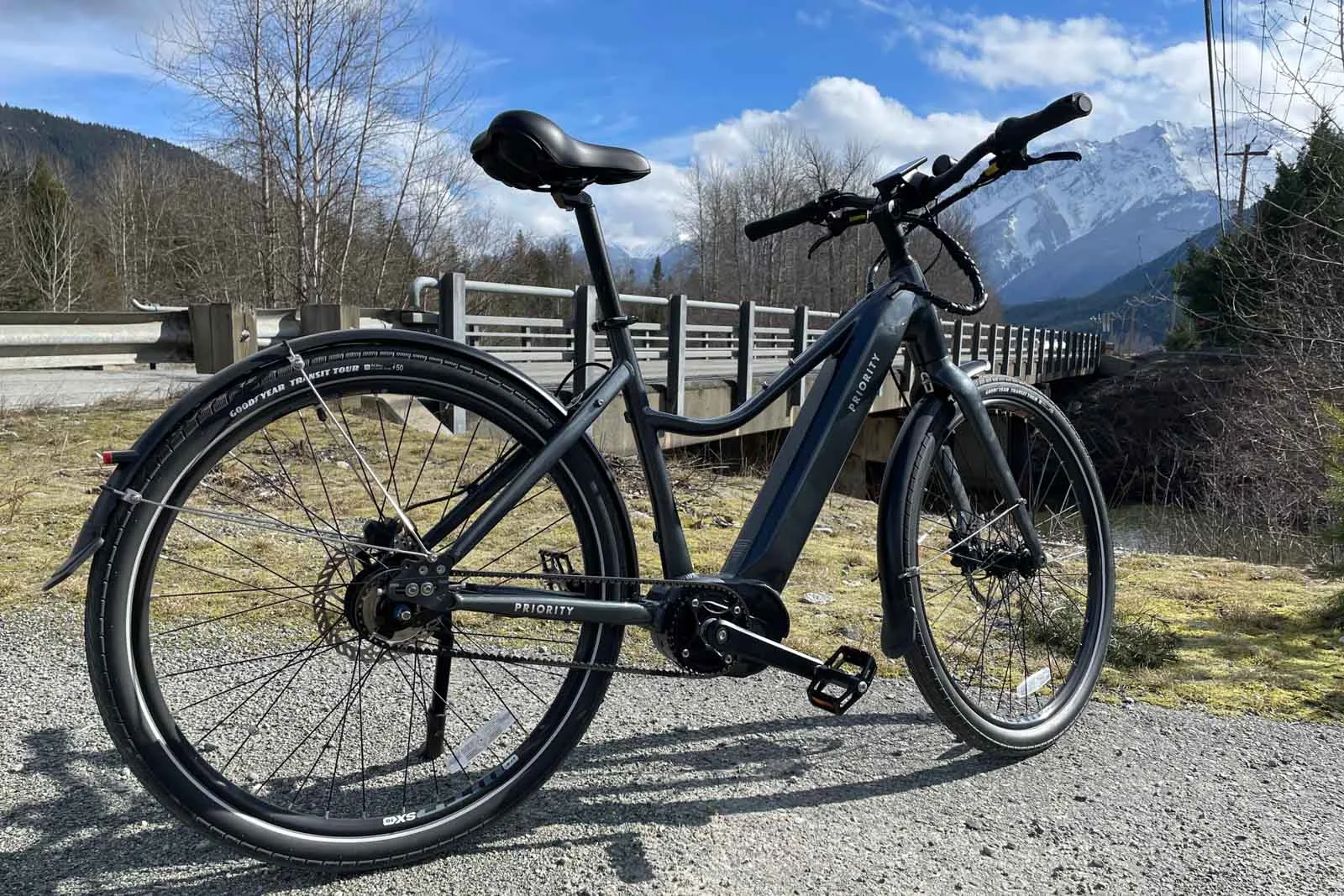There are several things a good e-commuter bike should have, and Priority’s Current Plus is one of those bikes that ticks all the boxes. Boasting a powerful mid-drive motor, a 720Wh battery, a 5-speed Shimano Nexus internal rear hub, and Gates’ CDX Carbon Belt Drive, the Current Plus will get you where you’re going with ease. That said, I did find this bike performs much better in Class 2 mode than Class 3, as it works hard to deliver its top speed in that mode.
Quality-wise wise this bike is an obvious step above those value-priced, offshore-manufactured e-commuters you see advertised on social media. The Priority Current Plus is a solid commuter bike from a reputable bicycle brand. In addition to offering a comfortable riding position, key commuter essentials like fenders, racks, and integrated lights are all included.
Assembly:
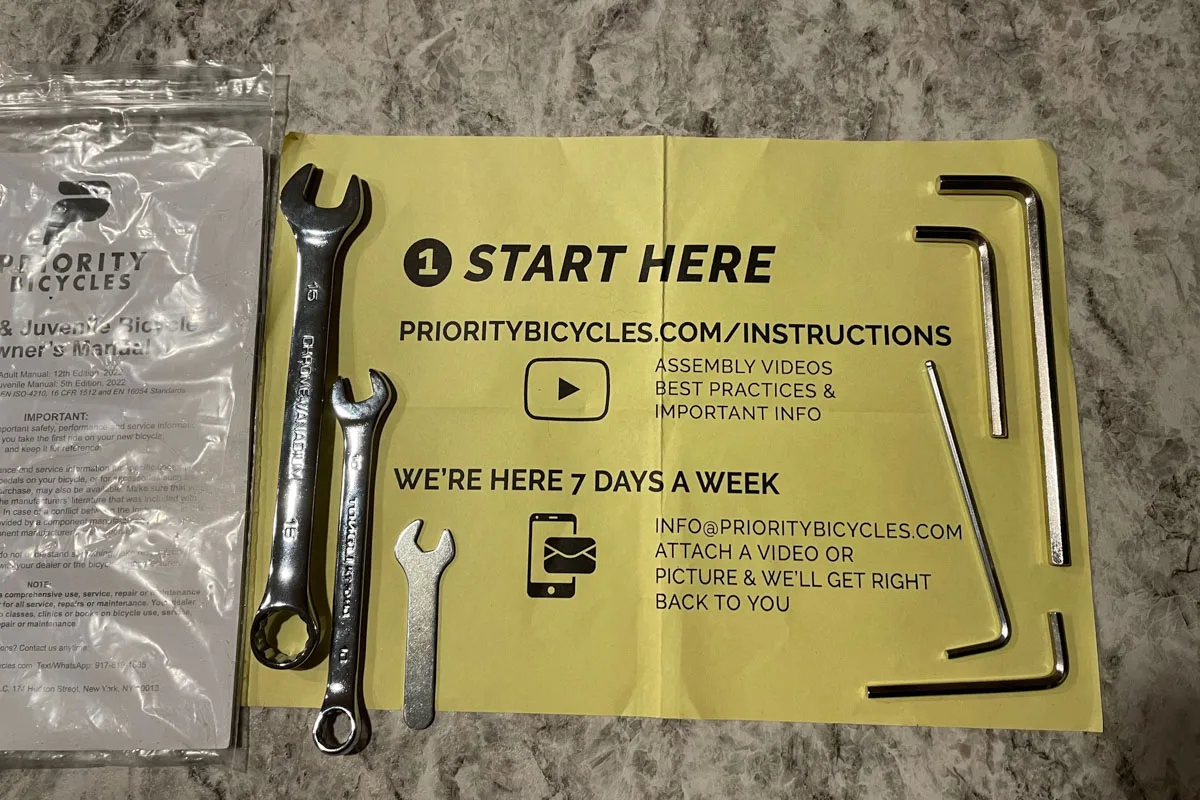
From the mostly assembled state it arrived in, building up the Current Plus was easy. I had to install the front wheel and fender, handlebar and pedals, and pump up the tires. Anyone with basic bike knowledge could do this, and Priority provides most of the tools you’ll need with the bike. They also provide a QR code and a link to an assembly video on their website.
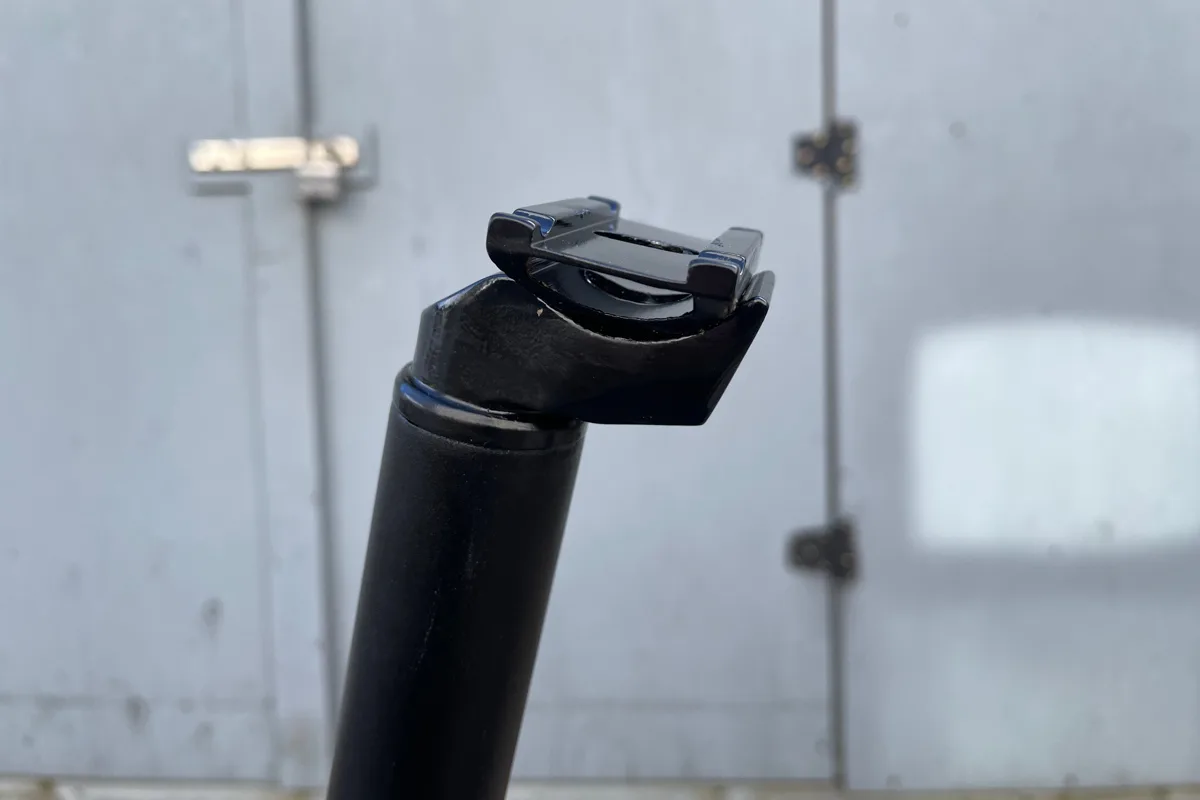
While the bike was very well packed by Priority, it’s obvious that whoever handled mine was not careful with it. The front brake rotor arrived bent, and the front wheel has a slight warp/hop as well. I also had to knock the seat guts off the post with a wooden block, as I found the lower piece seized into the post when I went to adjust the saddle position. Thankfully, there was no more serious or unfixable damage.
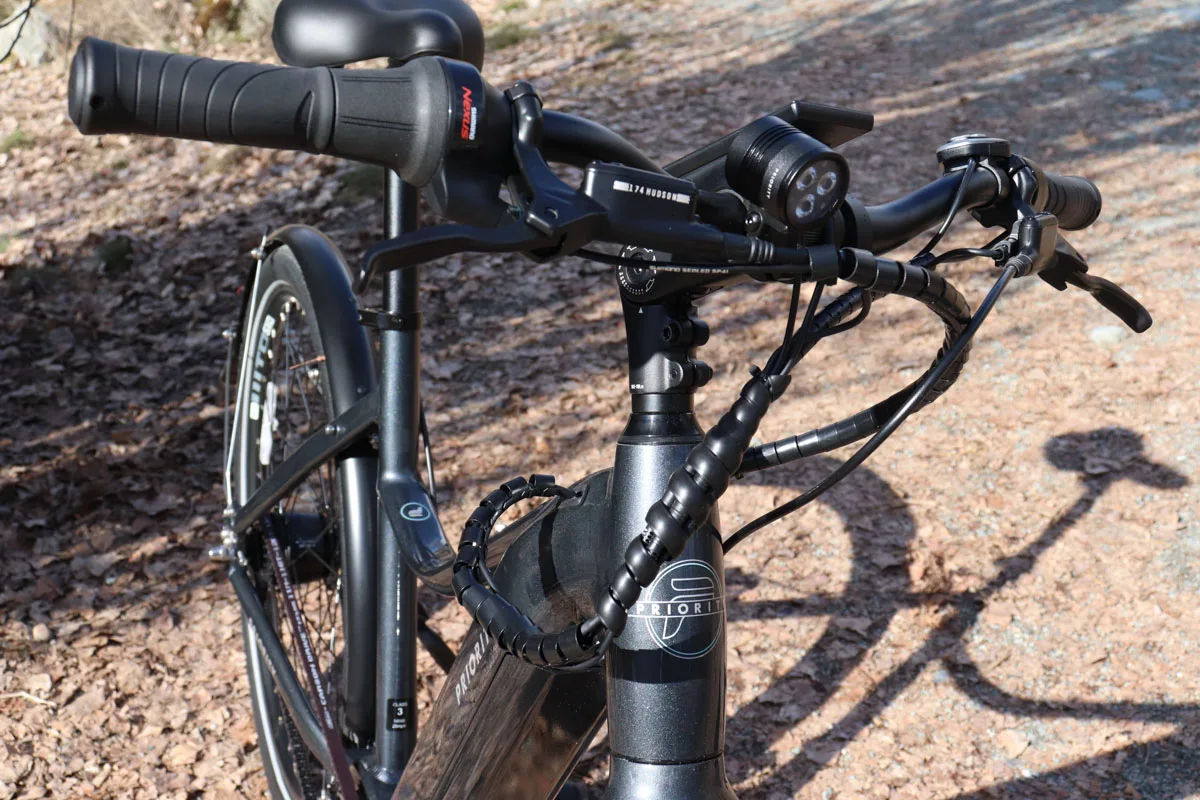
The one thing that doesn’t look particularly eye-pleasing about the Current Plus is the bundle of cables coming from the left side of the handlebars. It’s a bit longer than necessary and hangs down more than it needs to. Otherwise, the bike looks pretty nice and exudes a sense of quality.
Ride Impressions – Fit/Comfort:
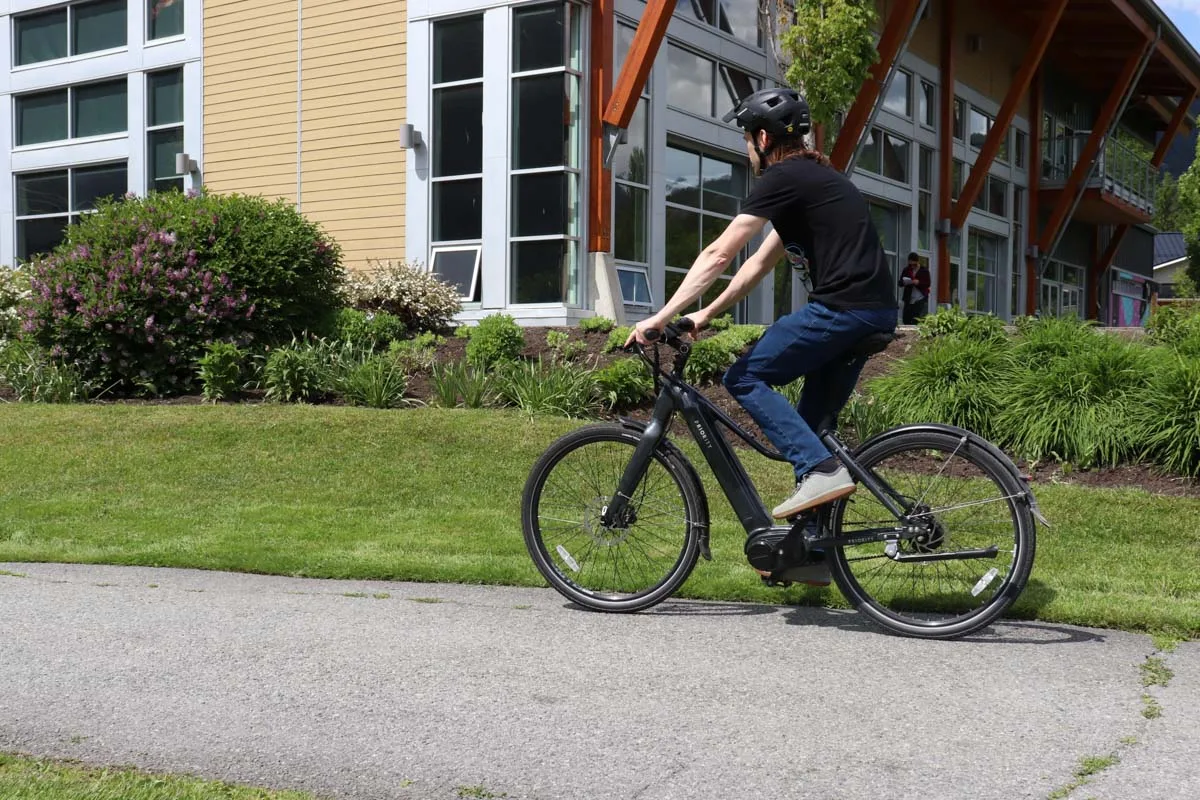
The Current Plus features a 6061 Aluminum frame and fork, and the frame offers a unisex step-through design. I have no trouble with higher top tubes, but the step-through frame is simply easier to mount.
Right away, I noticed the Current Plus offers a very comfortable riding position. I’m 5’10” and I’m riding a medium frame. Even with the adjustable stem set at a low 10° rise, I was sitting quite upright, so I left it in that position. The well-padded Selle Royal gel seat is nice and comfortable, and I’ve been riding the bike without a chamois.
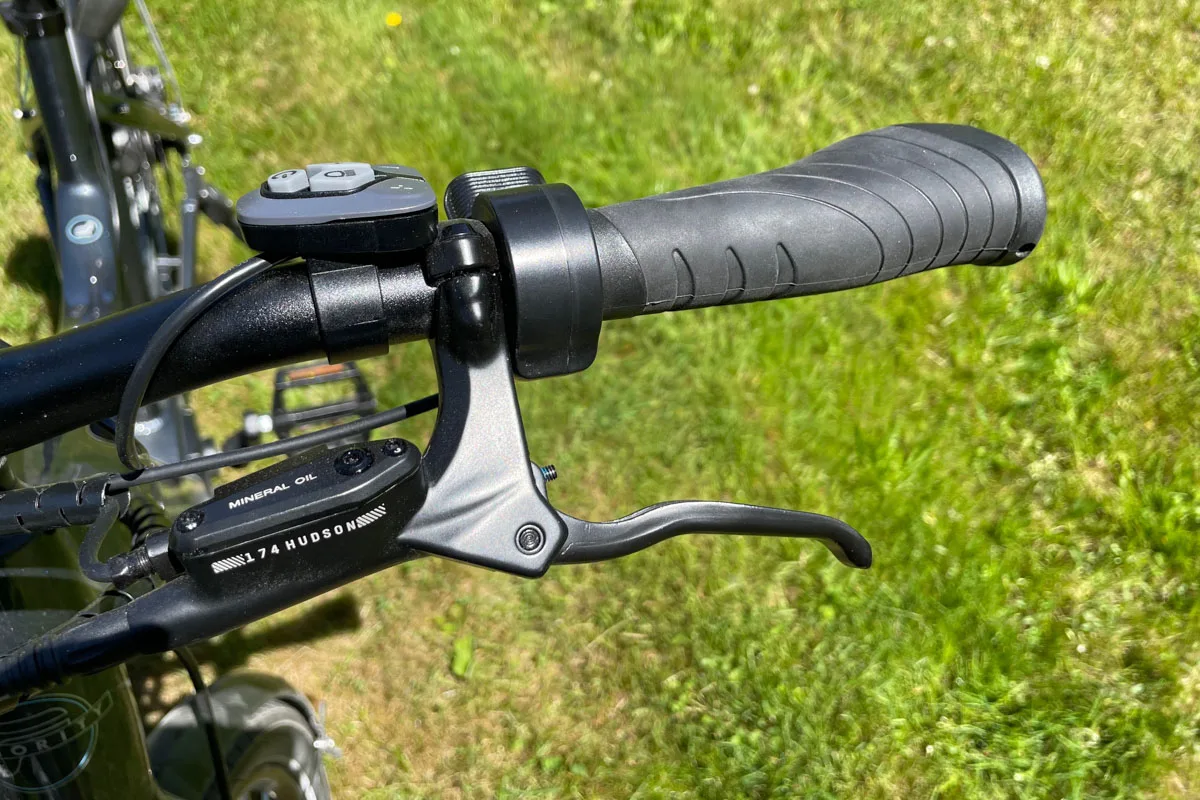
The reach on the brake levers is pretty long, but they do have a reach adjustment. I managed to dial in the levers enough for myself, but riders with smaller hands may still find them a bit far out. On my first long ride, I found the ergonomic grips a bit uncomfortable, as I’m used to round MTB grips. After more rides, I got used to the grips and now find them perfectly comfortable and supportive.
Components:
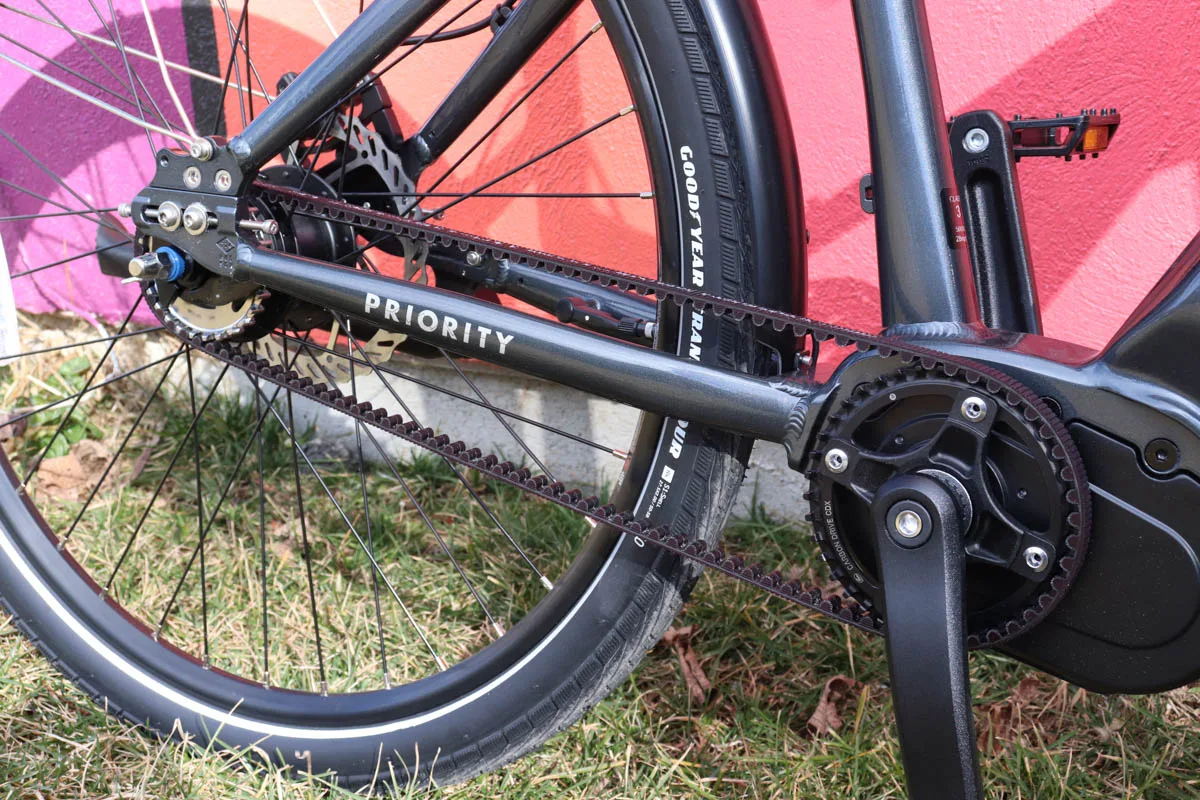
A main feature of the Current Plus is the Gates CDX Carbon Belt Drive system, which requires no need for lubrication and almost no maintenance. The belt drivetrain runs smoothly and quietly, and I had no mechanical issues with it whatsoever. Also, it’s nice not to have to worry about staining your pants, especially if you’re riding to work.
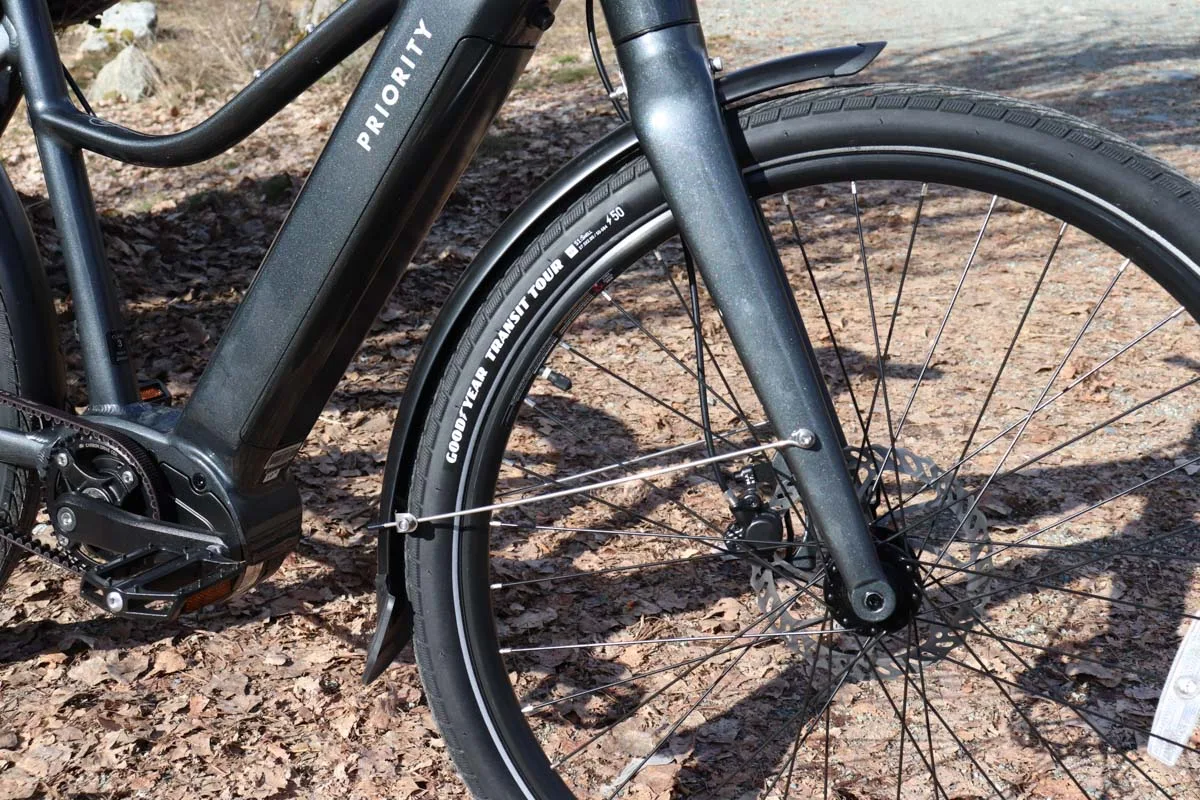
I like the 27.5” wheels and 50mm wide tires that Priority specs on the Current Plus. I am not a fan of fat tire commuters as an avid rider, I prefer better rolling speed over a softer ride, especially given this bike mostly stays on paved surfaces. The tires are wide enough to handle some moderate off-road terrain, so you absolutely can blast across a bumpy field or ride gravel trails. Anything much rougher than that is pushing this fully rigid bike’s intentions. Bonus points to Priority for including puncture-resistant multi-surface tires.
Fenders are a necessity for commuting, so I’m glad this bike gets two that provide plenty of coverage. The fenders do get rattly on anything rougher than packed gravel, or when dropping off a curb, but on smooth surfaces they stayed quiet and never required any re-adjustments.
Priority’s 174 Hudson dual-piston hydraulic disc brakes with 180mm rotors work well, easily offering ample power for a commuter in any weather conditions. Priority includes a set of metal platform pedals with the bike.
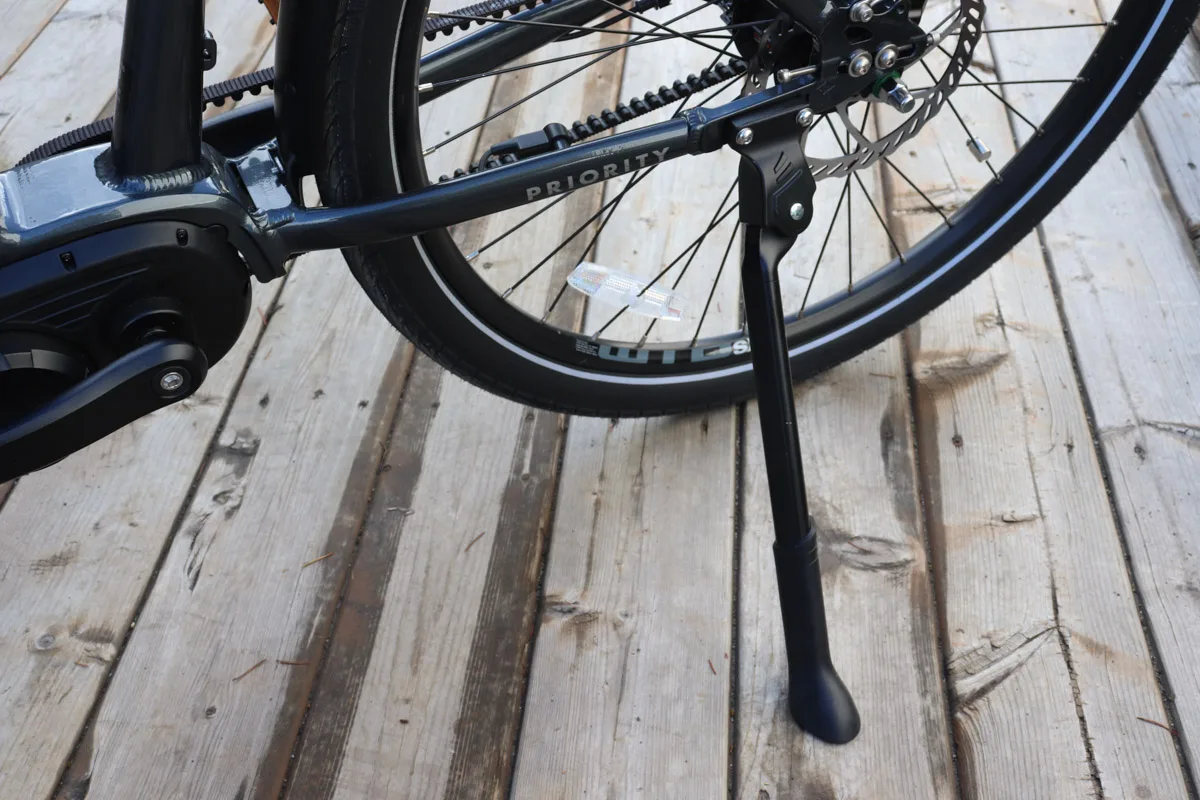
The included kickstand was very convenient, and it’s designed to support the bike with packed cargo bags. There is a water bottle mount on the bike’s top tube, so you can bring some hydration with you. It’s not the most elegant location, but at least it’s an option.
Gearing and Controls:
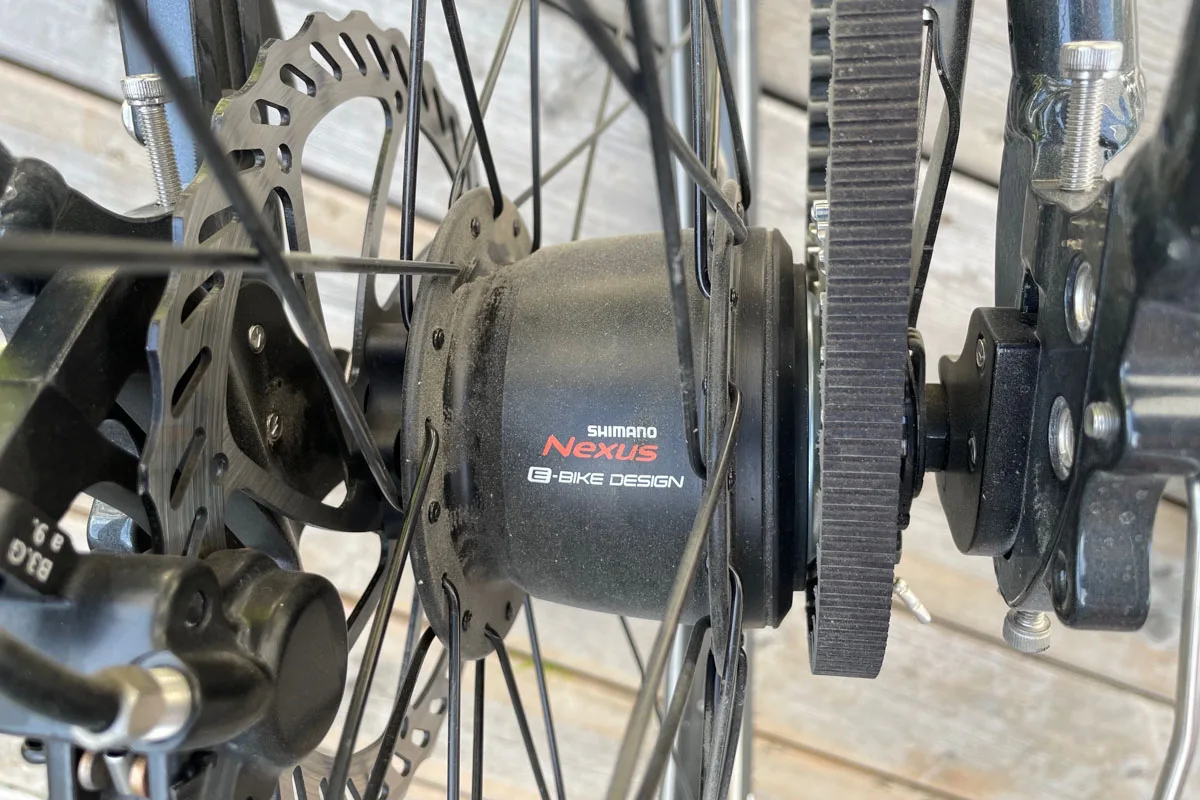
As for gearing, the Current Plus’ Shimano grip shifter is simple to understand and works perfectly well – just ease up on the pedals while you shift up or down. The Nexus internally geared rear hub offers five gears, which provide a good range for the Current Plus. Buyers do have the option of purchasing this bike with an Enviolo CVT-style rear hub and shifter, but I tested the Shimano version.
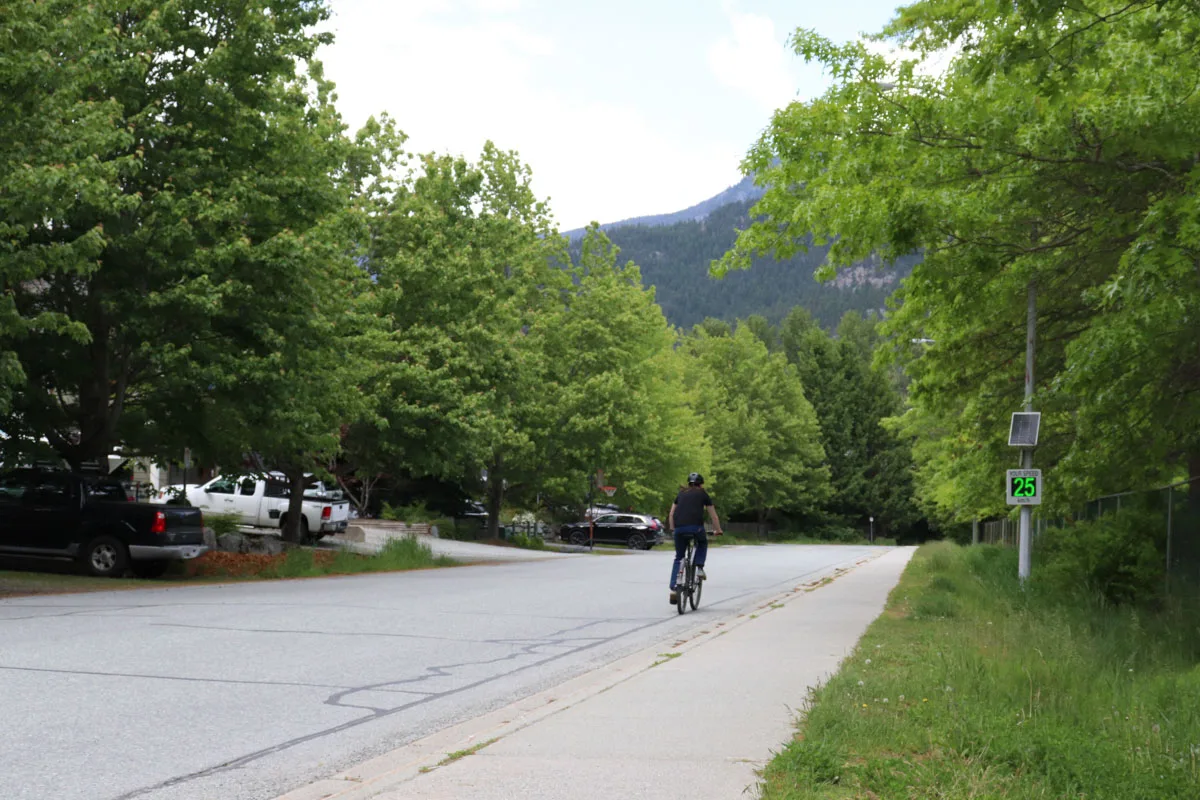
At the top end, gear 5 is tall enough that you’re spinning a comfortable cadence at the bike’s top assist speed (in Class 2 mode at 20mph). On the low end, I hardly ever rode in gear 1 as it’s very low, but it would be great for climbing steeper hills.
Since the law in British Columbia limits ebikes to 20mph, I mostly kept mine in that setting… but in the name of testing, I had to try the Class 3 28mph mode! Priority’s assembly video shows how to adjust the bike’s top speed using the controller.
If you wish to hit max speed, you’ll definitely want to be in gear 5, as anything lower will require a fast cadence. I found gear 3 gets a bit too fast at about 22-23mph, gear 4 gets you to around 24-25mph, and gear 5 will take you to the limit. If you intend to ride this bike at 28mph for extended distances, one taller gear would be nice, but for shorter bursts, the Current Plus’s gear range is adequate.

One thing you’ll want to remember is to shift into a lower gear before stopping the bike – that will ensure you get off to a nice, powerful start. Starting in 4th or 5th gear is too slow a cadence for the motor to kick in effectively, so you’ll have a few slow, labored cranks until the assist ramps up. Starting in gear 3 or less is ideal for jumping off with noticeable assist power.
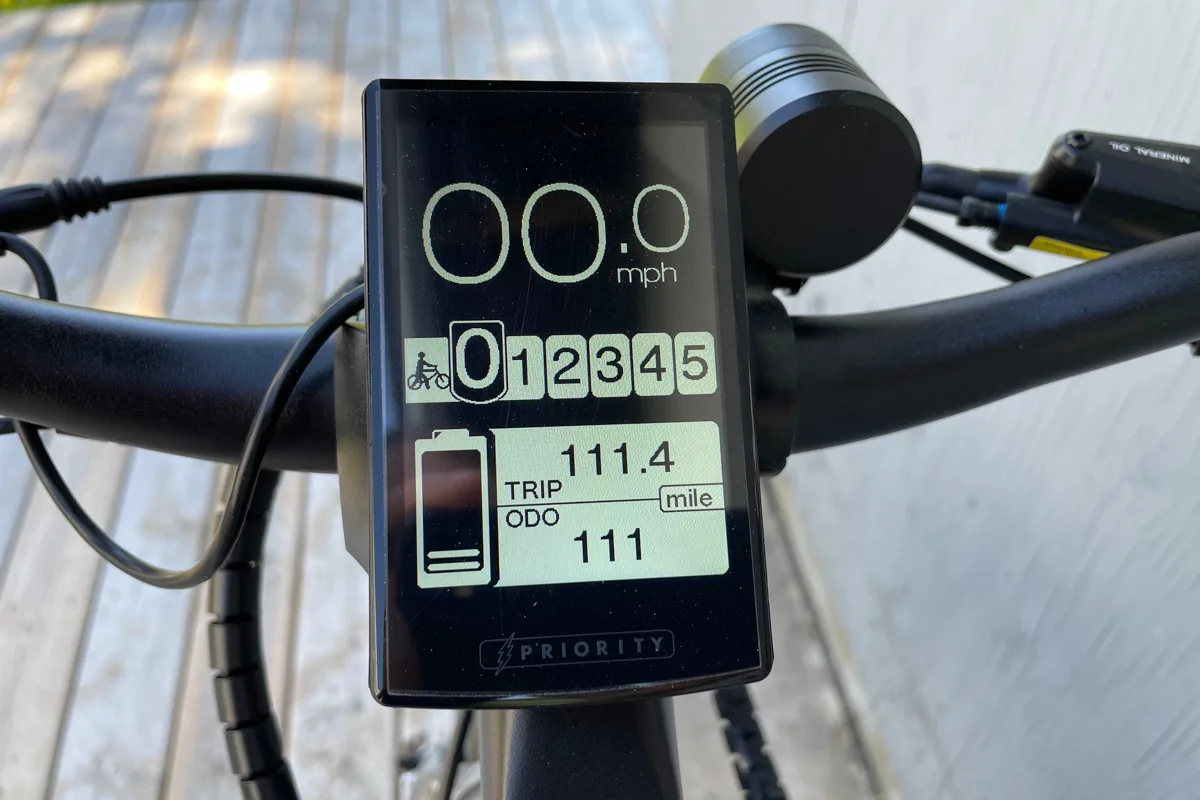
Priority’s display unit always remained easy to see throughout bright sunny rides, in dim areas, and in total darkness. I noticed it’s still easy to read through a bit of dust, too. The display unit is large enough to make reading key ride data and settings easy, but it’s not too bulky.
The display shows your battery life, assist level, speedometer, odometer, and tripometer. You can also scroll through display screens to see your average and max speeds, the duration of your ride, or access the settings screen.
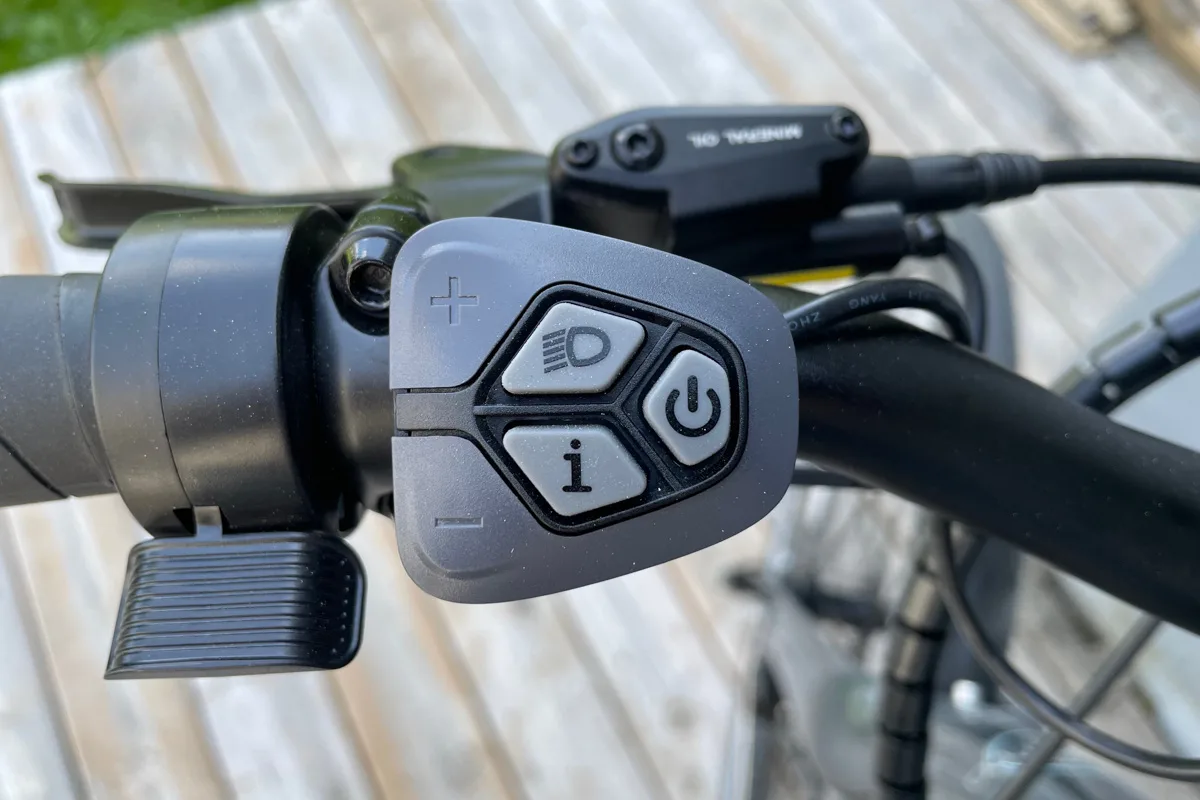
I found Priority’s control unit ergonomically sound and easy to operate. The controller includes the bike’s power button, a button to control the lights manually, an info button to scroll through display screens, and plus and minus buttons to toggle through assist levels.
Holding the minus button for two seconds puts the bike in walk mode, and holding both the plus and minus buttons opens up a settings menu. This menu offers several options, including resetting the trip odometer, adjusting the bike’s maximum assist speed, and more. The throttle sits next to the controller at your left grip.
Motor/Assist Power:

The Current Plus is assisted by a mid-drive motor, which provides up to 500W of power and 140Nm of torque. The motor uses a torque sensor to deliver assist power, and delivery was always smooth and predictable. I never noticed anything inconsistent or unnatural about the assist at any speed or power level.

Assist levels one and two offer noticeable help on flat terrain, but level 3 is where you really start sailing along. Levels 4 and 5 bring on the power more and get you up to max assist speed quicker. For uphills, assist levels 4 and 5 are ideal. The steepest hill in my area was no problem in either, whether pedalling or using the throttle. I did shift down to gear 3 on the steep hill, but never had to go lower.
In Class 2 mode, the bike’s throttle is fun and powerful, even at level 3. It gets you up to 20mph pretty quickly and easily, but levels 4 and 5 accelerate even faster!
When I switched into Class 3 mode, I noticed the lower assist levels struggle at higher speeds. To reach 28mph, I had to use levels 4 or 5. Even at assist level 3, I had to crank pretty hard to get the bike beyond about 24mph (and that was on flat terrain). Level 4 or 5 will get you up to the bike’s max speed, but that means if you want to ride the Current Plus at 28mph regularly, you’ll be reducing the bike’s range.
I also noticed the throttle would not hold the bike at 28mph, even on a flat road. In the highest assist level, the throttle would bring me to about 21mph and no faster. I even pedalled up to a higher speed, then held the throttle. The bike slowed down to around 20-21mph, then maintained that speed. After testing the Class 3 mode, I have to say the Current Plus is a great Class 2 bike, but it’s not as great as a Class 3.
Range:
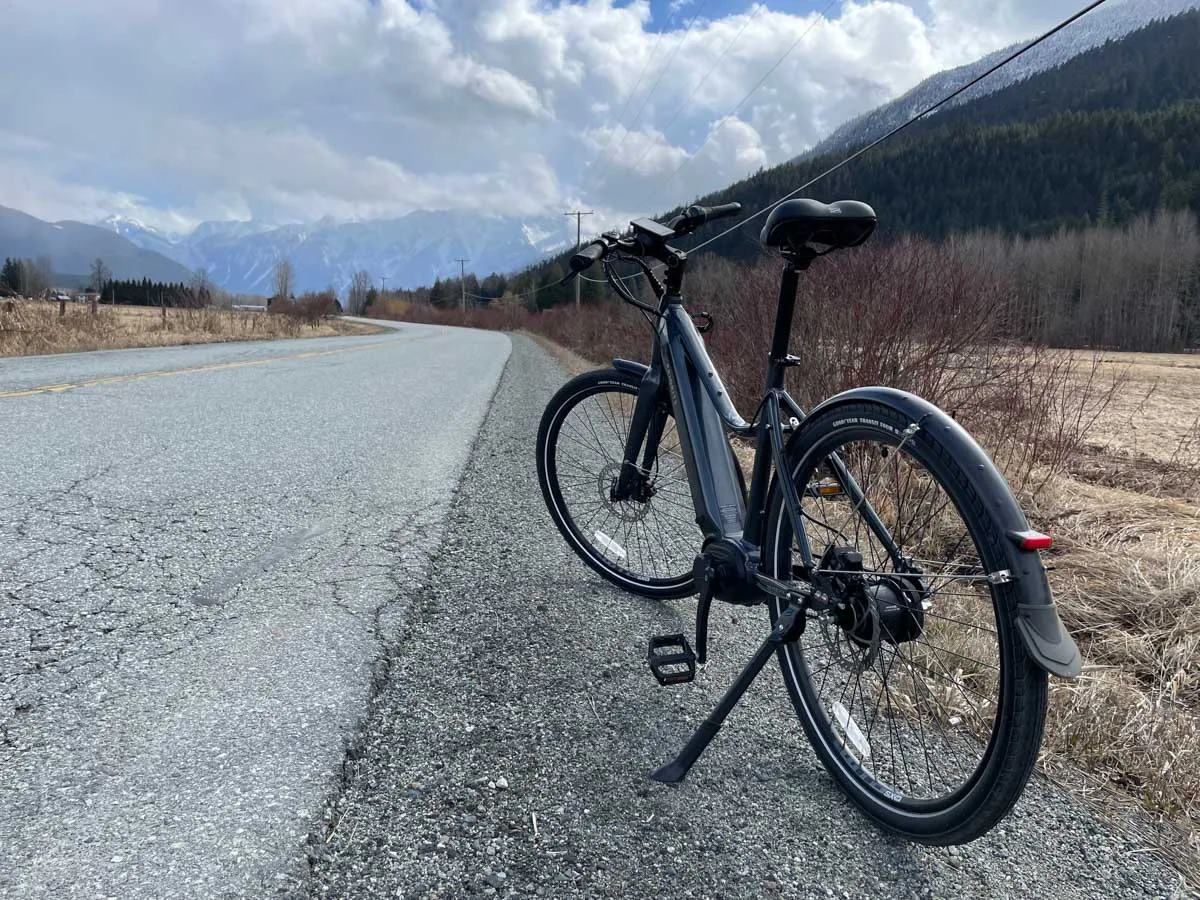
The Current Plus is equipped with a 720Wh battery that will get you pretty far… but using the assist freely, I didn’t get too close to Priority’s claimed maximum. Please note that all my range testing was done with the bike in Class 2 mode.
Right out of the box, on its factory charge, I rode 16 miles over about an hour. I rode mostly in assist level 3, but tried 4 and 5, plus the throttle, too. This took the battery from just under half to nearly dead. This seemed a bit short, but when I gave the bike a fresh full charge, the range improved.

On a full charge, I killed the battery with 73 miles on the odometer. I’d say a 57-mile range is very good, but it’s less than promised, as Priority claims up to 75 miles (in Class 2 mode). These rides involved a mix of power levels 3-5, and a bunch of throttling. Also, my town is mostly flat, but I did purposely ride up hills several times just for testing.
My next charge cycle achieved a bit less, giving me 50 miles of range. I’d say my riding was pretty similar to the last charge, using the same power levels on the same terrain.
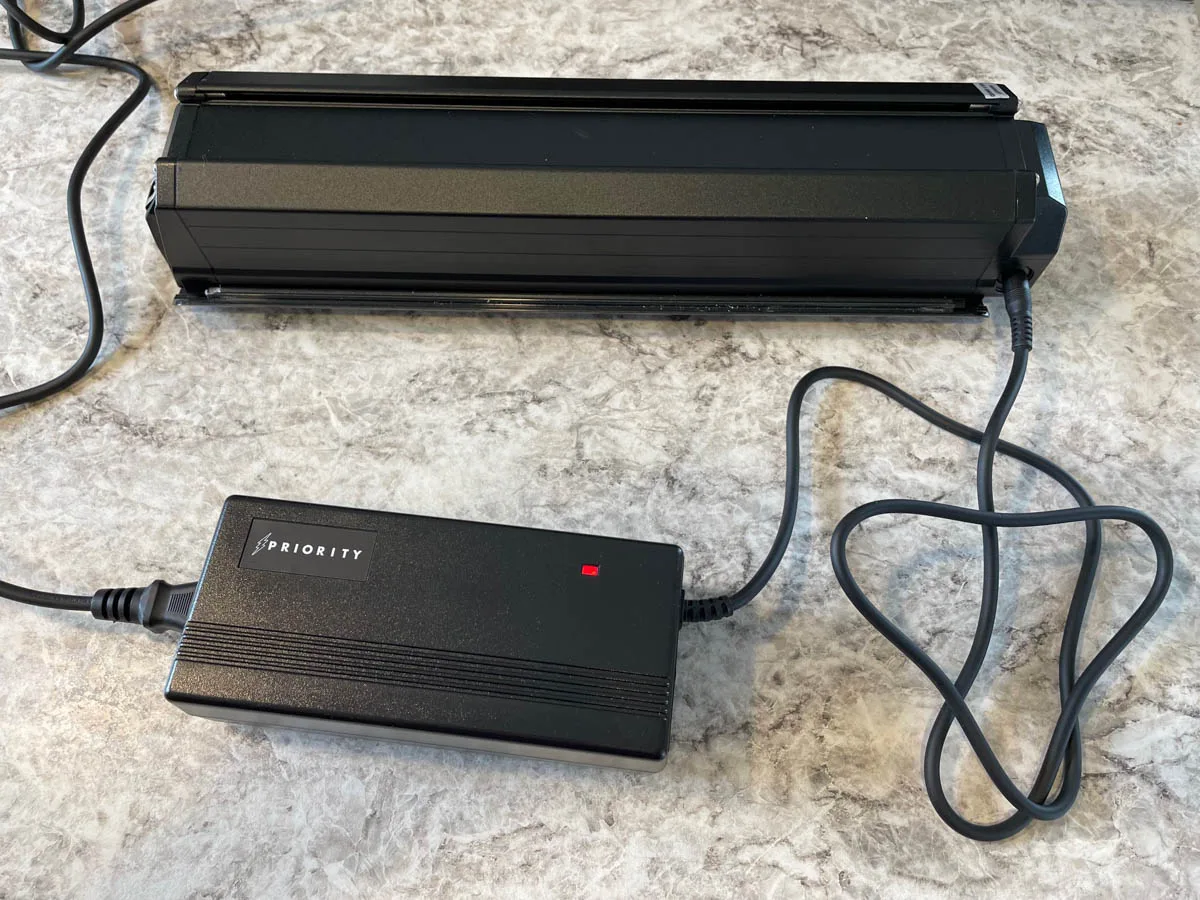
The bike’s battery can be charged in the frame, but is also easy to remove for off-bike charging. Just twist the key and push the button to pop it out. The battery drops out pretty easily once you realize you have to hold the front wheel straight to give it enough room.
Priority says a full charge should take 4-5 hours, and in my case, 5 hours of charging topped off the fully dead battery. An indicator light on the charger turns from red to green once the battery is charged. I did notice Priority’s battery charger is quite loud! As soon as you plug it in, a fan starts making a whirring noise that I could hear in the next room.
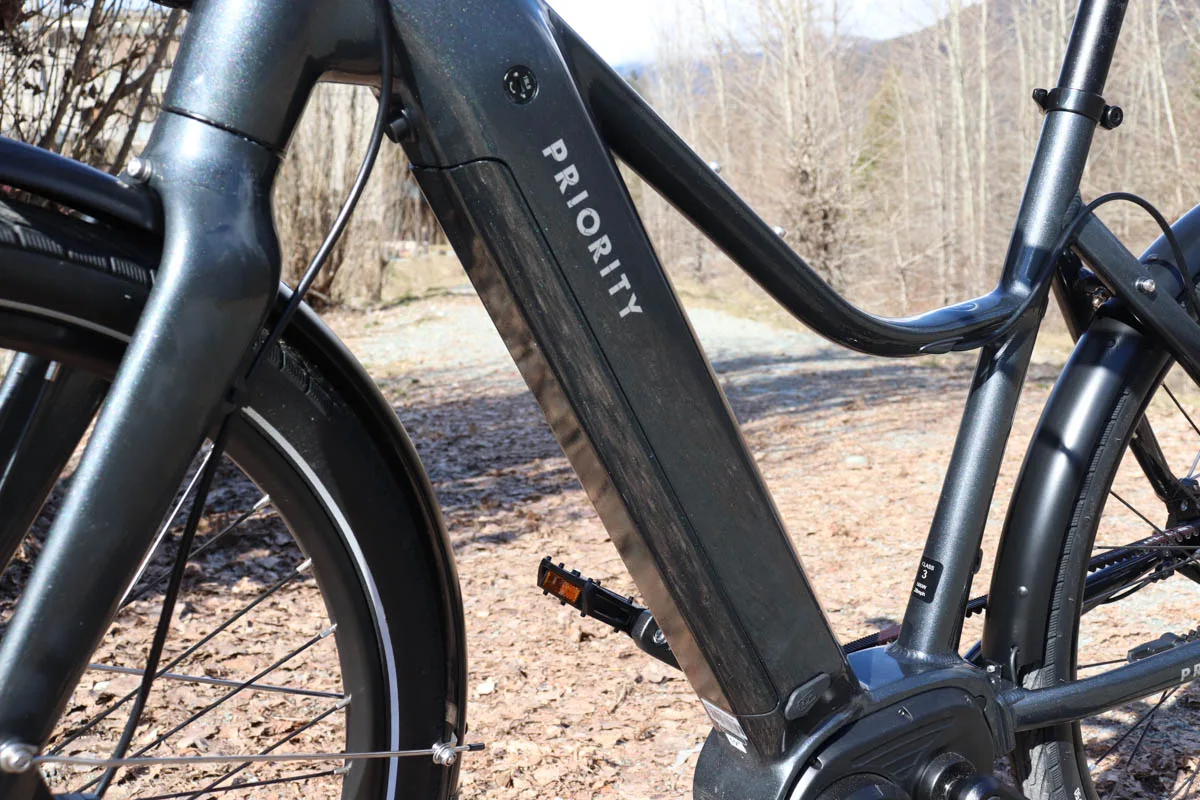
One night, I killed the Current Plus’s battery to see what kind of warning it gives you. When you get very low on power, the last bar of battery life starts to flash. While on the last bar, I started to notice the power dropping off, and this reduction was equal between pedal assist and throttle modes. From flashing, I rode about 3km before the assist power simply wasn’t helping anymore. The second time I ran the battery dead, the assist power cut out pretty quickly. I got about one mile before the power suddenly dropped to zero.
If you do run out of battery, this is not the worst ebike to pedal without assist. There is drag from the motor when you put a little effort into the pedals, but not when pedalling lightly, and there’s no drag when you’re cruising. The Current Plus’s road-friendly tires roll nicely, and the 55lbs bike glides along flat ground pretty well… but I wouldn’t want to heave it uphill without power.
Lights:
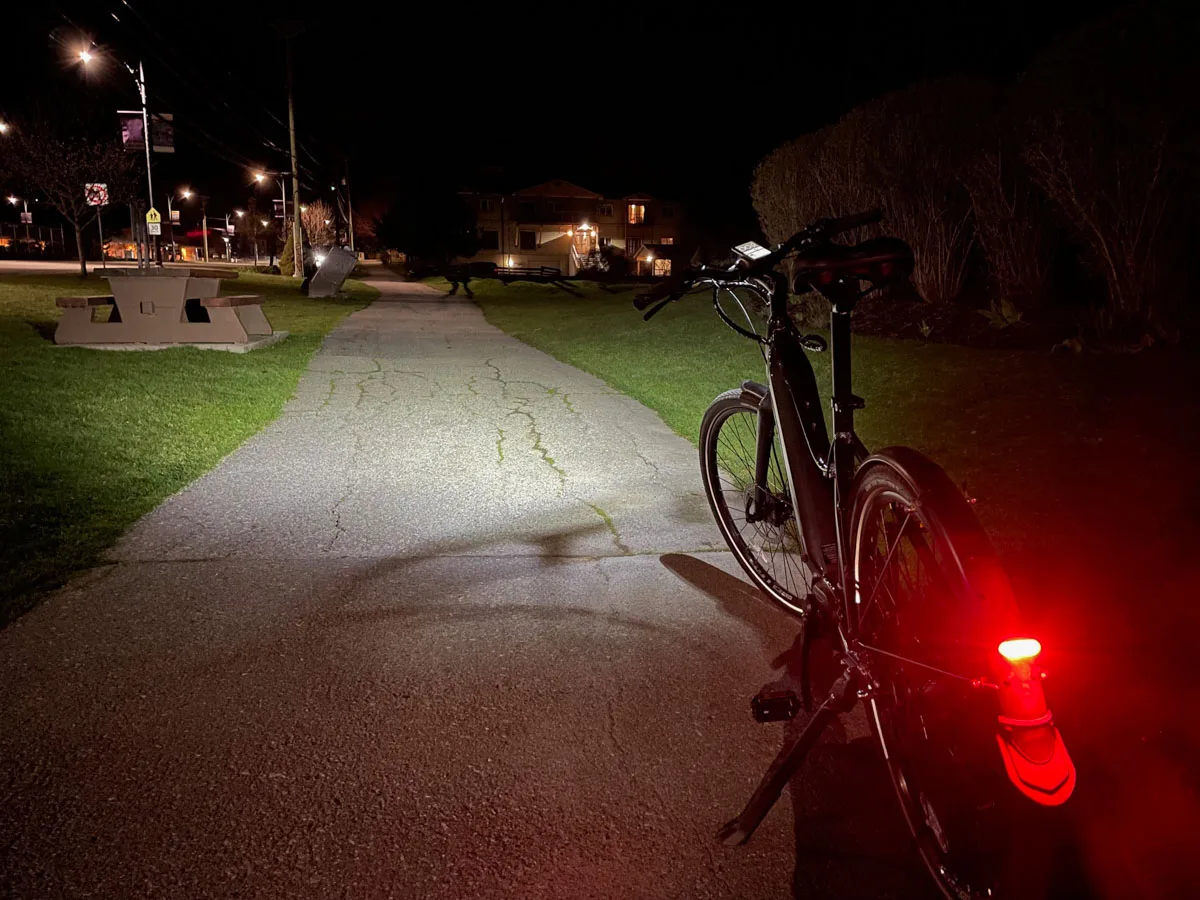
Late one evening, I rode through town and into the countryside to test the Current Plus’s lights. The 600 lumen headlight is definitely sufficient for the bike, as it’s bright enough to be noticeably helpful even in semi-lit areas. In darker areas, it is ample for the bike’s max speed, but if you routinely traveled a dark road, I could see some riders looking for additional front lighting. The stock light provides good visibility up to about 30 feet, so at top speed, hazards or obstacles should be visible, but they approach quickly. The tail light is pretty bright, ensuring motorists can see you.
Priority’s automatic light function worked perfectly, as both lights came on when the bike was powered up in the dark. With the lights on for nearly an hour, I didn’t notice any considerable drain on the battery.
For bonus points, it would be awesome if the handlebar control unit had lit-up arrows/icons. I realized right away I could not see the controls at night, but thankfully, they are simple and intuitive.

The Priority Current Plus retails for $3299. Frames are available in S/M/L sizes, and your color choices are Charcoal (as tested) or white.
As for replacement parts, Priority will carry batteries, motors, wiring, controllers, and other components for many years following any model’s release.
